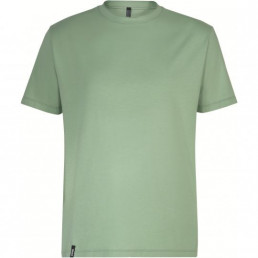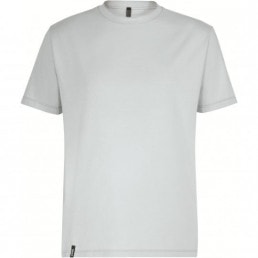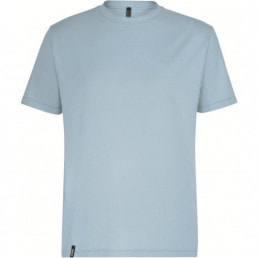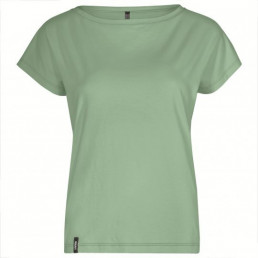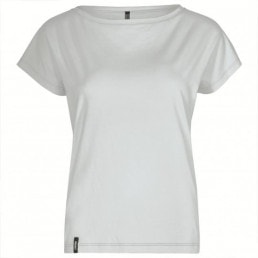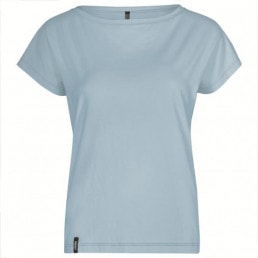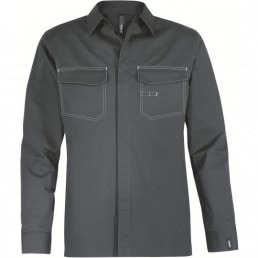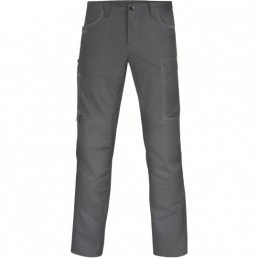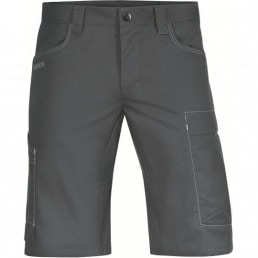Workwear that is used day after day must meet numerous requirements. On the one hand, it needs to be durable and able to protect the body from external forces such as cuts, punctures and chafing, as well as high and low temperatures. On the other hand, it also needs to offer excellent wearer comfort and be easy to move in. That is why high-tech fibres are often used for high-quality workwear. Such fibres have been specially developed in order to meet all these demands. However, unlike textiles such as wool, cotton and linen, these fibres are chemically produced rather than being made from renewable raw materials. What does this mean for the sustainability of this kind of modern workwear? In this blog post, we will take a closer look at the environmental aspects of workwear.
In order to evaluate the sustainability of clothing, we need to examine its whole life cycle – from production to disposal. Suppliers of environmentally friendly clothes should therefore be able to answer a series of questions relating to the entire lifespan of an item of clothing. This can be divided into three key phases:
- Production
- Use
- End-of-life.
Relevant questions might include the following: how are the raw materials obtained that are used to produce the fibres for the textile? How are these processed? Are any harmful substances used? How water- and energy-efficient is the production process? Are the working conditions fair? What happens when the clothing is discarded?
Local problems – global causes: why textiles are often not sustainable
The clothing industry has frequently made the headlines because of its environmentally harmful practices and poor working conditions. The scientific magazine “Quarks” has listed 6500 different chemicals – some toxic – that are used in textile finishing. In addition, up to 20 percent of all industrial waste water globally comes from textile production, and the majority of this ends up untreated in rivers, lakes and oceans. This is despite the fact that environmental standards in the main manufacturing countries in South East Asia are not officially much different from those stipulated by law in places like Europe, a problem that stems from a lack of governance. The same is true of health and safety standards in dye works, weaving mills and sewing workshops, where the emphasis is on saving costs rather than on working conditions.
The considerable increase in pressure on costs in recent years is partly due to the phenomenon of fast fashion: according to the environmental charity Greenpeace, textile producers are putting new, low-cost collections on the market at increasingly shorter intervals. In this context, price is more important than quality or sustainability. When new fashion is available at a faster and faster rate, products do not need to be made to last. As a result, clothes that have only just been bought quickly go out of fashion or become threadbare. This means that they are not even suitable as second-hand or vintage items, but instead go straight in the bin, with obvious harmful consequences for the environment.
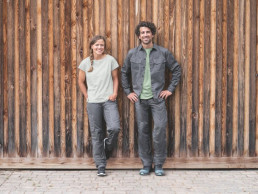
However, waste can also be produced while textiles are still being used. When synthetic materials are washed, for example, they often shed microfibres. These get into sewage because they are so tiny that they cannot be filtered out by water treatment systems. Creatures that live in and on the water consume these microfibres, and the substances they contain (such as softening agents or fire retardants) are passed up through the food chain and end up in the human body.
Admittedly, changing trends in fashion are not usually a reason for workwear being replaced. Nevertheless, it often undergoes more wear and tear than clothing that is worn outside work, meaning that it needs to be replaced more often. Depending on its field of use, workwear is often exposed to very specific stresses that are often highly concentrated at certain points – and it must protect the body from these forces. If the clothing is to perform this function well, however, it must always be intact. This means that damaged items must be replaced immediately. For example, while jeans with holes in the knees might be an on-trend look at home, work trousers with similar holes in would be extremely ill-advised, especially if the wearer is required to carry out tasks on his or her knees.
So what might a potential solution to this dilemma look like for the textile industry and its customers? Environmental organisations have long been calling for a renunciation of fast fashion in favour of a “Cradle to Cradle” approach. What does this mean, exactly, and how might this principle be applied when it comes to workwear?
Definition: Cradle to Cradle
This concept puts a new twist on the old expression “cradle to grave”. It means that as well as being sustainably produced, a product should not have to be “buried” (thrown away) at the end of its service life. Instead, it should be given a new lease of life by being returned to the biological or technology cycle. Thus, it is recycled in the truest sense of the word. “Cradle to Cradle” is therefore a holistic principle that can be applied throughout the value creation chain.
How can products that are in line with this principle be identified? The easiest way is to look for items that have the globally recognised “Cradle to Cradle Certified®” seal of approval. This is awarded by the Cradle to Cradle Products Innovation Institute, a non-profit organisation that evaluates and promotes the sustainability of products according to scientific standards. Only products that meet set requirements in five categories are eligible for this certification. These categories are:
- Material Health: This category in the Cradle to Cradle Certified® Product Standard assesses that chemicals and materials used in the product are selected to prioritize the protection of human health and the environment, generating a positive impact on the quality of materials available for future use and cycling.
- Product Circularity: This category in the Cradle to Cradle Certified® Product Standard assesses that products are intentionally designed for their next use and are actively cycled in their intended cycling pathways.
- Clean Air & Climate Protection: This category in the Cradle to Cradle Certified® Product Standard assesses that product manufacturing results in a positive impact on air quality, the renewable energy supply, and the balance of climate changing greenhouse gasses.
- Water & Soil Stewardship: This category in the Cradle to Cradle Certified® Product Standard assesses that water and soil are treated as precious and shared resources. Watersheds and soil ecosystems are protected, and clean water and healthy soils are available to people and all other organisms.
- Social Fairness: This category in the Cradle to Cradle Certified® Product Standard assesses that companies are committed to upholding human rights and applying fair and equitable business practices.
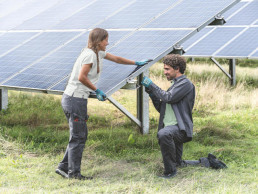
Sustainable workwear by uvex
uvex’s new line of workwear uvex suXXeed greencycle planet has successfully completed this certification process and has been awarded the Cradle to Cradle gold certificate. As with uvex suXXeed products, which have already been available for some time, this range is made up of high-quality workwear that is not only highly functional and comfortable, but also has a fashionable look thanks to clever materials and cuts – perfect for wearing at work in industry and trade, or even at home.
The uvex suXXeed greencycle planet collection is produced using renewable energy and with a commitment to high social standards. Finished items of clothing are packaged in paper bags made from recycled wood fibres and are then transported to customers using the shortest possible routes, having been produced in Europe.
However, the holistic approach that uvex has taken with this collection goes further still, and is wholly aligned with the Cradle to Cradle principle: all greencycle products are truly “designed to be recycled”. In practice, this means that this line of workwear is completely compostable – from the yarn and the dye to the buttons. 100 percent of uvex’s environmentally friendly clothing can therefore be returned to the ecosystem once it has been discarded.
But what about longevity? After all, clothing that can be worn for as long as possible is best for the environment. Can customers trust that biodegradable workwear will last a long time?
The answer is yes! The uvex suXXeed greencycle planet collection may be compostable, but this process does not start when a pair of trousers or a shirt are simply left hanging in the wardrobe for a few days too many. If the textiles are to be returned to the biological cycle, they need warmth and a moist environment. Microbes that are present in the earth can then completely disintegrate the fibres and materials within 400 days.
Available in the range are long cargo trousers, bermudas and shirts for men and cargo trousers and T-shirts for women. As you would expect from uvex safety products, these items of clothing have many cleverly designed, practical details, such as loops for holding tools and pens or a smartphone. The ergonomic cuts of these pieces allow the greatest possible freedom of movement. The suXXeed greencycle planet line meets every requirement for workwear – while also excelling in terms of its sustainability.
Would you like more information about uvex’s environmentally friendly range? The uvex service team will be happy to help you. We will be introducing more products designed with sustainability in mind on our blog soon.
Sources:
quarks.de/umwelt/kleidung-so-macht-sie-unsere-umwelt-kaputt/
greenwire.greenpeace.de/system/files/2019-04/s01951_greenpeace_report_konsumkollaps_fast_fashion.pdf
c2ccertified.org/about/about
